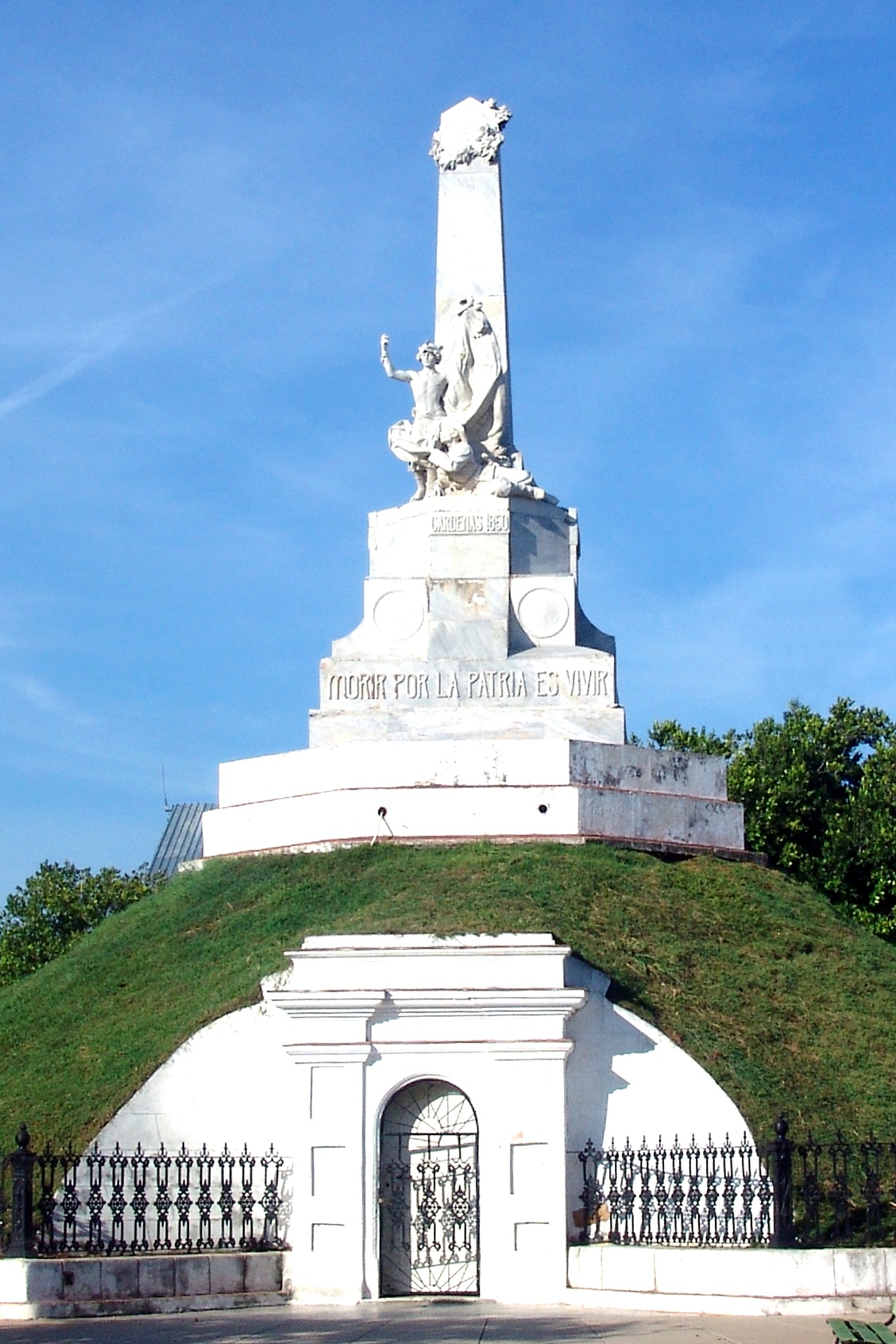
Mausoleum of the Martyrs.
Place where the remains are kept 238 mambises belonging to the Cárdenas Brigade killed in combat in the Cárdenas municipality war of 1895 - 1898 against Spain. After the war of 1895-1898, in Cárdenas it was decided to build a mausoleum to store the remains of the officers and soldiers killed in the war against Spain. For those purposes; A commission was established, chaired by General Carlos María de Rojas, Chief of the Cárdenas Brigade, whose mission was to locate, unearth, and transport to the city the mortal remains of the fallen combatants.
History
Preparations for the construction of the mausoleum were carried out in parallel with the search for the graves of the fallen.
Search for the remains
During the war in our jurisdiction, the custom was followed of indicating the places where soldiers and officers killed in combat were buried. This order, given by the head of the Cárdenas Brigade, was very useful, for once the war was over, to locate exactly the burial sites. Once the remains had been collected, they were taken to the basements of the Rojas family residence, an appointment in Céspedes between 24 and 25, where another commission headed by the mother of General Carlos María de Rojas had the sad, but glorious task of cleaning and deposit in small boxes, the immortal bones. After the past years of the last war against the Spanish metropolis, we can judge with greater accuracy the merit and sacrifice that the bloody war took, and particularly for this part of the country, without large forests or mountains to protect the troops. The 238 ossuaries deposited in the mausoleum of the Cárdenas martyrs give an idea of the extent to which military actions in this region were actively and recklessly developed.
Mausoleum construction
In a session of the city council it was agreed, on the proposal of the councilor Dr. José María Verdeja, to erect a monument to those fallen for independence in the center of Parque de Occidente. Engineer Manuel Iturribe was commissioned to build the pantheon and mound that would cover it. These works began on March 1, 1899 and which was completed on February 24, 1900. Later, the sculptor José Vilalta Saavedra was commissioned to execute the central sculptural group who carried it out in Rome in legitimate Carrara marble in 1910. This It was completed on May 20, 1912. The people of Cárdenas collected penny by penny the amount of the budget to defray the cost of building the mausoleum of the martyrs.
Opening
First stage
On February 24, 1900, the monument was inaugurated in its first version, where the marble sculpture group had not yet been built, and a wooden pyramid was built in its place. For this, the ossuaries that had been provisionally in the cemetery were transferred to the Halls of the Town Hall and on Saturday, April 21, 1900, declared a day of mourning, they were veiled in the Burning Chapel. The next day, Sunday, April 22, at 8 in the morning, the remains were transferred in the city's duly decorated funeral carriages and were accompanied by some 30,000 attendees. On May 20, 1902, the first Ceiba was planted in the area of Calle Mercedes, first as a tribute to the Republic and then as a tradition.
Second stage
On May 20, 1912, the second and final inauguration of the mausoleum was held, which included the placement of the sculptural group executed by Vilalta. In the components that were incorporated into the mausoleum, the plates with the name and military rank of all those who rest in their ossuaries and others no less important with dedications from public and official institutions and from families and personalities of the locality stand out.
Posthumous tribute
On the outside of the monument and on the beautiful marble door that gives access to its interior, posthumous tributes are engraved to the Cardenas officers and soldiers killed in the war against Spain.
Textual transcription of the door engraving
“The city of Cárdenas erects this monument to the memory of heroically succumbed in this jurisdiction fighting for independence. February 24, 1900. ”
Textual transcription of the exterior panels
The city council collected the remains that lie here. Rest there dear relics; Sleep brave patriots. The present generation admires you, the country blesses you. ”
"When centuries have passed over this modest work and time has imprinted its hard action on marble and bronze, our tomb will always remain to evoke in future generations the memory of our glorious conduct. Sleep. ”
"The people of Cárdenas, and especially their children and youth, have in the mausoleum of the martyrs, considered one of the first of its kind in Cuba, a beautiful monument that serves as a teaching and example."
Revolution of 59
On July 26, 1959, in the park of the Mausoleum of the "Martyrs of the War of Independence" (Parque de Occidente) in Mercedes between Souberville and Clavo, an obelisk was unveiled to the memory of the M-26 Fighters - Julio Cardenes who gave their lives in the fight against Batista's tyranny. This being the first obelisk or monument erected in a public square to the M - 26 - Julio combatants. Cárdenas, like other cities in Cuba tyrannized by the Batista regime, created his cell of the Movement. Each place in the country had a decisive participation in the final victory, contributing its own blood quotas. Our scoop is a recognition to those who quietly fought at this stage for a better and just world for their country.
(Taken from Ecured).




- You should not use obscene or offensive words.
- Comments should be related to the topic.
- Comments that violate previous policies will not be posted.